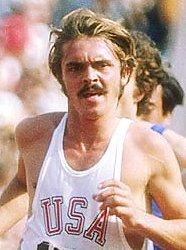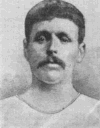OK, I've delayed reporting on Sunday's Silicon Labs Marathon Relay because... we're not entirely sure how it went. Take me, for example - I either permformed miserably, with my slowest 10K in two years, or I did OK, or I blew away my personal record and finally broke through a wall I've been working on for a while.
Mandy, Jean, Jacala, and Staci E. were on one team with me. Phillip and Kelly ran with my old marathon buddies, the P'Dipps, and Mirsa ran with her sister and some other friends. Hopefully, they'll all add their individual stories and observations to this (hint).
Going through my usual race morning ritual, I got up, immediately made breakfast, and turned on News 8, the quality of which I only find acceptable when I need to know the weather at 5:48 am. The first words out of the weatherman's mouth: "It is really uncomfortable out there right now." He went on to talk about all the places around Austin with 100% humidity. Swweeeet.
Auditorium Shores was sporting a very festival atmosphere, with brightly colored canopies everywhere, live music from some surprisingly good kid bands, and moonwalks that I was dying to go jump around on.
Mandy ran the first leg, a 12K leg that measured around 7.5 miles, and came through in 1:23:49, averaging a nice 11:11 per mile.
Staci hopped in for the next leg, which was allegedly 10K, or 6.2 miles. She came in at 1:07:43. In April, she and Rosemary had run the Texas Roundup 10K in 1:00:04, so she was disappointed. ironically, had she come in at her previous best time, she would have come in with the
last runner from the RunTex team, which won with a 2:25:04 overall time. Their time was four minutes shy of the record... or was it?
Staci handed off to me, and I took off. I was not up for this race, for some reason. The legs felt weak. But I knew Jacala would be waiting to run the next leg, so I couldn't slink off and run back to my car. Plus, my keys were back at our base camp. I wanted to do no worse than my PR (personal record), but I really wanted to finally break through and run less than 9 minute miles.
First rule of racing? Don't go out too fast. At the first, and only, mile marker for the 10K, I checked the watch... 7:52. Oops. To put this into perspective, I averaged 8:01 per mile in my time trial. Clearly, this was a very bad thing.
I decided I would slow down, use the cushion I had just stupidly built, and try to average 9:10 or so for the rest of the race, even knowing the reality of the exponentially detrimental effect of going out too fast. But let's be optimistic, and check our time at mile two... except there were no other mile markers for the 10K or 5K courses. There was also the issue that the maps for the course didn't show which direction we would be running in, so the race plan I had in mind and sent to the team was almost completely useless. At the topside of the loop around the Capitol, there were no course monitors or signs, just some cones. I turned around to the people behind me, and we all shrugged at each other, and turned.
I ran the stupid, stupid stretch on Cesar Chavez. Ugh. Don't get me wrong, I believe we're in this for the challenge, and we shouldn't complain about the topography of the course. But do 2/3 of all the races in Austin have to run up Cesar Chavez? I mean,
really?
So, I got in at 1:00:09 by my watch, and was annoyed. Jacala took off. Staci and I wandered around, talked to Jean, and avoided the table full of free hamburgers by the Lean Beef Council or whatever. Staci got a free electronic jumprope, which has to be one of the most absurd things I've ever seen.
Jacala came in at 40:09, according to official timing, and she looked smooth and strong at the finish. We missed Jean going out, because at noon, they made everyone still waiting to start the last leg go ahead and go, so they could make the 1:00pm course closure time. As much as they tried to appeal to beginner runners, and as many as took them up on that appeal and were out there working hard, the course needs to be open longer. We were really not all that slow, but by the time Jean was running, one station had long run out of water cups, and was just splashing people with water instead, and the great folks from RaceWorks (who have to work in the time constraints dictated by the race director) were having to start to tear down while people were still coming across. This doesn't really do a lot to inspire beginning runners.
We caught Jean coming back in, and she, too, looked really strong at the end, and she was working hard, pushing a nice pace. Because she had to start before Jacala came in, she has no official timing (as much as she'd love to claim the posted 28:21), but I believe she said she was out there for 40-45 minutes.
So, with the exception of Mandy, we were all a bit confused and disappointed in our times. Then we started hearing rumors that the 10K course was 6.6 miles, not 6.2. We started wondering if the 5K was long, as well. Of course, we all thought of the line from last week's "The Office" - "5K is not 5,000 miles, Michael...
Phillip ran the "10K" in 59:25.3, Kellie in 1:05:23, and Mirsa ran the 12K in a great 1:15:05, averaging 10:01 per mile.
So, here's the thing. The RunTex race report said, "the course was nearly a mile long. Apparently, the 5K course was the culprit, measuring about 3.5 miles, and while the 10K leg was supposed to make up for that with a 5.9 mile short course, that did not happen." Huh? Wha?
Meanwhile, the official timing by RunFar claims a total distance of 28.1 miles, showing the 10K course as 6.8 miles long, rather than 6.2. People are claiming their GPS devices reported everything from 6.6 to 6.8. We're still waiting on RunTex to respond to the questions on their forum, or issue some sort of clarification.
Regardless of whether that happens and what it reveals, here's what we can learn from this. First, plan and visualize your race. Then, be prepared for it to quite probably all go wrong. People work hard on these races, but they make mistakes. You work hard, but you'll be making plenty of mistakes (
7:52? What the hell was that?). Once you're out there, though, you either give up, or you adapt and make the best of your day. Clearly, there's only one option, especially if you don't have your car keys with you.
And then there's the issue of how you judge yourself. In this case, we may have done great, or we may have done OK, and initially, we thought we had done badly. Time will always be a source of joy or disappointment for us, but we have to keep it in perspective. If it was a true 10K course, and I ran my worst time in two years, or if I set a new personal record, the only thing that matters either way, that really says something about who I am, is whether I pushed myself enough on that day, in those conditions. Again, times are rarely adequate or accurate measures of the human heart, will, or character.
And finally, in the end, I had a good day with some great runners and friends, in the first race where Team Spiridon showed up and represented. I'm really proud of how we all did, and I can't wait for the 10K on October 21...






